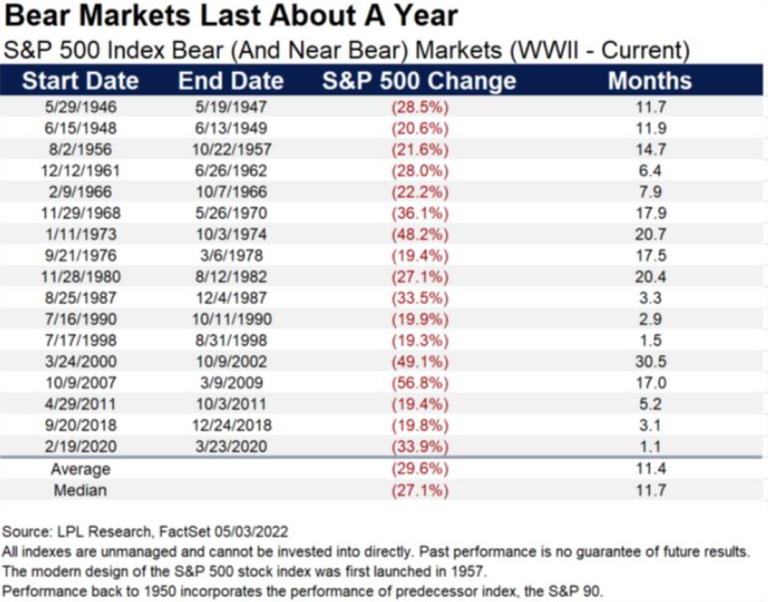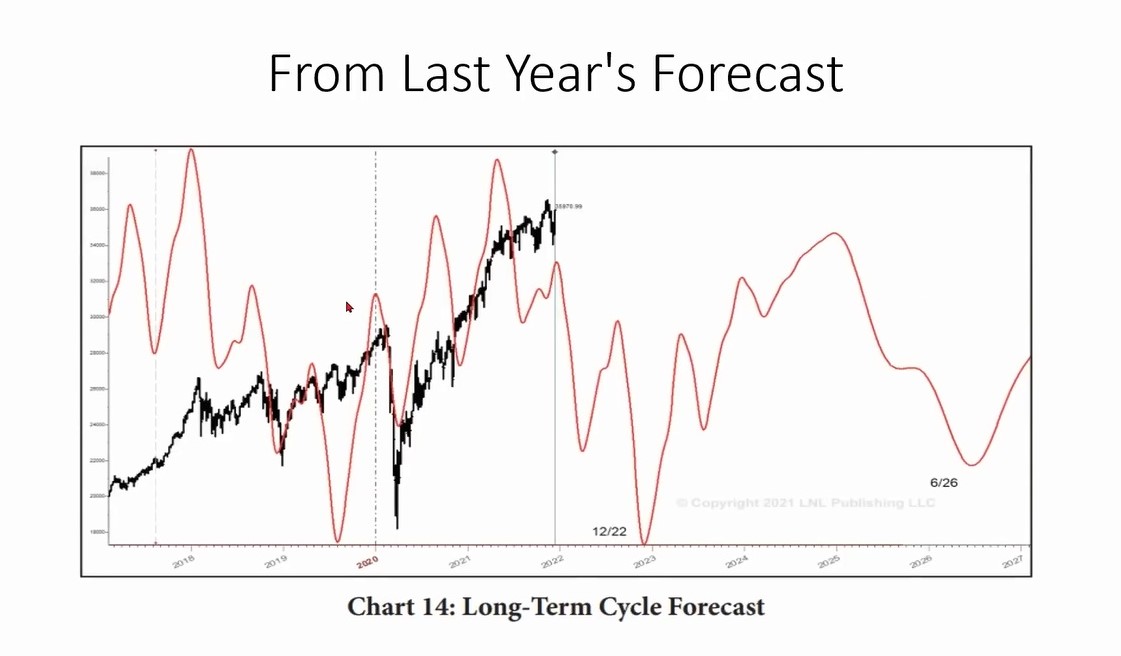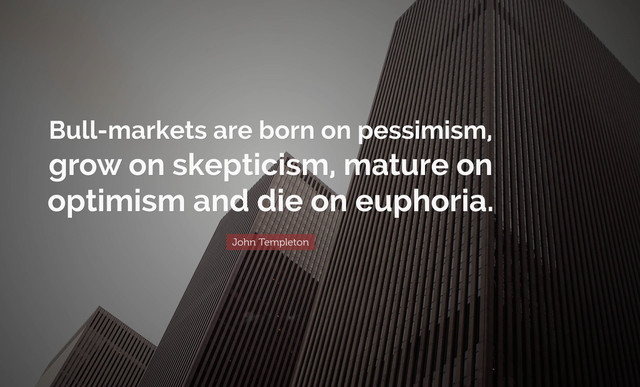You are using an out of date browser. It may not display this or other websites correctly.
You should upgrade or use an alternative browser.
You should upgrade or use an alternative browser.
City Index
Junior member
- Messages
- 23
- Likes
- 0
That’s an interesting question. From a technical standpoint, the return to the June lows could attract some buyers and help the index attempt to bounce. However, with recession concerns intensifying, and central banks looking more hawkish, stocks will likely to continue facing selling pressure over the near-term, so a dead cat bounce could be a possibility.
Of course, all trading carries risk, but it will be interesting to see how $SPX trades this week.
Of course, all trading carries risk, but it will be interesting to see how $SPX trades this week.
City Index
Junior member
- Messages
- 23
- Likes
- 0
The US Dollar's strength is reflective of the poor economic sentiment around the world at the moment, and has been weighing on all almost other assets.
However, lot markets appear to be in "wait-and-see" mode ahead of this week's US inflation figures, hesitant to overstretch themselves as the data is likely to play a key role in near-term direction. The US10Y yield is hovering just below its multi-year highs, with 4% currently acting as a resistance level, while the S&P500 managed to hold just above the September lows on a closing basis, despite hitting a new intraday low during Tuesday's session.
The US CPI print relative to expectations may likely determine whether we see bond yields and USD pullback, allowing for a countered bounce in equity markets, or if the greenback pushes higher and exposes major indices to another downward breakout.
However, lot markets appear to be in "wait-and-see" mode ahead of this week's US inflation figures, hesitant to overstretch themselves as the data is likely to play a key role in near-term direction. The US10Y yield is hovering just below its multi-year highs, with 4% currently acting as a resistance level, while the S&P500 managed to hold just above the September lows on a closing basis, despite hitting a new intraday low during Tuesday's session.
The US CPI print relative to expectations may likely determine whether we see bond yields and USD pullback, allowing for a countered bounce in equity markets, or if the greenback pushes higher and exposes major indices to another downward breakout.
S&P 500 (sometimes the past...comes back...):
from the high of January 4, 2022 to to the low of October 13, 2022: = -27.5%
practically similar to the period: 1980-1982 (see table), but it could fall as low as -28% (3469), or as low as -28.5% (3445),
so if it were to rise sharply from any of these 3 levels, then perhaps (maybe) the minimum might have been reached;
if, on the other hand, it were to fall further, it could reach -33.5% or -33.9% (as in 1987 or 2020)

from the high of January 4, 2022 to to the low of October 13, 2022: = -27.5%
practically similar to the period: 1980-1982 (see table), but it could fall as low as -28% (3469), or as low as -28.5% (3445),
so if it were to rise sharply from any of these 3 levels, then perhaps (maybe) the minimum might have been reached;
if, on the other hand, it were to fall further, it could reach -33.5% or -33.9% (as in 1987 or 2020)

City Index
Junior member
- Messages
- 23
- Likes
- 0
This is an extremely interesting analysis.from the high of January 4, 2022 to to the low of October 13, 2022: = -27.5%
practically similar to the period: 1980-1982 (see table), but it could fall as low as -28% (3469), or as low as -28.5% (3445),
so if it were to rise sharply from any of these 3 levels, then perhaps (maybe) the minimum might have been reached;
if, on the other hand, it were to fall further, it could reach -33.5% or -33.9% (as in 1987 or 2020)
With the S&P500 erasing 50% of its post-pandemic gains at one point, it seems Thursday's sharp reversal higher could have been fuelled by a host of buy-limit orders being triggered at this key technical level, as well short-covering from bears when a break below 3500 failed to materialise. It will be interesting to see if the market can build on this bullish momentum over the near-term.
However, all trading carries risk, and given the bearish fundamental backdrop that persists, even if the market can rally over the coming days, it could still end up being another bear-market bounce as opposed to the start of a new uptrend.
On October 14 I had reported it here (post #6):
this similarity: S&P 500 from the high of Jan. 4, 2022 to the low of Oct. 13:= -27.5%, practically similar to the period: 1980-1982 (see table I had inserted in the above post), so in my opinion the October 13 low is probably the annual low.
According to some statistics in the book: "The right stock at the right time" by Larry Williams: years ending with the number 2 are years in which a mininmo is often realized from which an upward movement will start;
in the fourth year of the 4-year cycle, a downtrend and thus a low is often formed, and 2022 is the fourth year of the 4-year cycle;
finally, 2023 will be the third year of the U.S. Presidential cycle (which is obviously 4 years), and the third year is usually upward because whoever is in Office prepares the election campaign for the following year (even Perry Kaufman in his book: "New Trading Systems and Methods," confirms this feature of the third year of the US presidential cycle).
Therefore, according to these statistics, an Upward Market should follow, probably until this spring.
this similarity: S&P 500 from the high of Jan. 4, 2022 to the low of Oct. 13:= -27.5%, practically similar to the period: 1980-1982 (see table I had inserted in the above post), so in my opinion the October 13 low is probably the annual low.
According to some statistics in the book: "The right stock at the right time" by Larry Williams: years ending with the number 2 are years in which a mininmo is often realized from which an upward movement will start;
in the fourth year of the 4-year cycle, a downtrend and thus a low is often formed, and 2022 is the fourth year of the 4-year cycle;
finally, 2023 will be the third year of the U.S. Presidential cycle (which is obviously 4 years), and the third year is usually upward because whoever is in Office prepares the election campaign for the following year (even Perry Kaufman in his book: "New Trading Systems and Methods," confirms this feature of the third year of the US presidential cycle).
Therefore, according to these statistics, an Upward Market should follow, probably until this spring.
I'm afraid I can't add to the debate whether we've just seen another dead cat bounce in the index. Enough to say I never short the US indices, no matter how bearish they look, no matter how short the time-frame. So, yes, I haven't made any money from S&P shorts during this bear market. But I'm happier taking higher probability trades.
JohnnyForex
Member
- Messages
- 88
- Likes
- 10
It's good to keep in mind that statistics are simply probabilities and usually that's never 100 %. I think we're in a different market regime compared to earlier periods, so any analogue/comparison should be used with caution.
Seasonality is strong for this time of the year in a bull market, but it's actually weak for bear markets.
Seasonality is strong for this time of the year in a bull market, but it's actually weak for bear markets.
City Index
Junior member
- Messages
- 23
- Likes
- 0
That's a great point. It might also be worth mentioning that historically, stocks tend to perform better in the months following the US mid-term elections relative to the preceding months.It's good to keep in mind that statistics are simply probabilities and usually that's never 100 %. I think we're in a different market regime compared to earlier periods, so any analogue/comparison should be used with caution.
Seasonality is strong for this time of the year in a bull market, but it's actually weak for bear markets.
However, all trading carries risk, and with the current backdrop of inflation and a global slowdown, there is no guarantee of that this trend will continue for the upcoming months.
I had already reported here (post #8):
the importance of the third year of the U.S. Presidential Cycle, described in Larry Williams' book: "The right stock at the right time", (even Perry Kaufman in his book: "New Trading Systems and Methods," confirms this feature of the third year of the US presidential cycle).
The Stock Trader's Almanac 2023 by J. Hirsch & C. Mistal confirms in even greater detail the bullish characteristic of the third year: "In the years before the President's election, only one loss in 84 years," and according to them, there could be new highs in the pre-election year 2023; already for some years they have been predicting that the Dow Jones will reach 38820 by 2025.
Will that really be the case?....We'll see....
the importance of the third year of the U.S. Presidential Cycle, described in Larry Williams' book: "The right stock at the right time", (even Perry Kaufman in his book: "New Trading Systems and Methods," confirms this feature of the third year of the US presidential cycle).
The Stock Trader's Almanac 2023 by J. Hirsch & C. Mistal confirms in even greater detail the bullish characteristic of the third year: "In the years before the President's election, only one loss in 84 years," and according to them, there could be new highs in the pre-election year 2023; already for some years they have been predicting that the Dow Jones will reach 38820 by 2025.
Will that really be the case?....We'll see....
Larry Williams' 2023 forecast, taken from his Jan. 4 video, predicts a rise in the first few months of the year and then a descent probably all the way into the fall.
The curious side, is that his forecast is completely opposite to that of Thomas Bulkowski, who predicts instead, a rise in the Market right from March and continuing throughout the year, as can be seen in his charts that I have included here:
Which of the 2 predictions will come closest to the reality of the Market? We will see soon....on these screens.
Larry Williams' forecast:

The curious side, is that his forecast is completely opposite to that of Thomas Bulkowski, who predicts instead, a rise in the Market right from March and continuing throughout the year, as can be seen in his charts that I have included here:
US Stock Market Near-Term Direction
US equities look to be at an important inflection point with focus on today’s US PCE Price Index, and Federal Reserve Chairman’s speech at the Jackson Hole Symposium. The S&P500 stalled at a confluence of resistance around the 200-day MA last week, including a downtrend resistance coming from...
www.trade2win.com
Which of the 2 predictions will come closest to the reality of the Market? We will see soon....on these screens.
Larry Williams' forecast:

Similar threads
- Replies
- 77
- Views
- 39K

